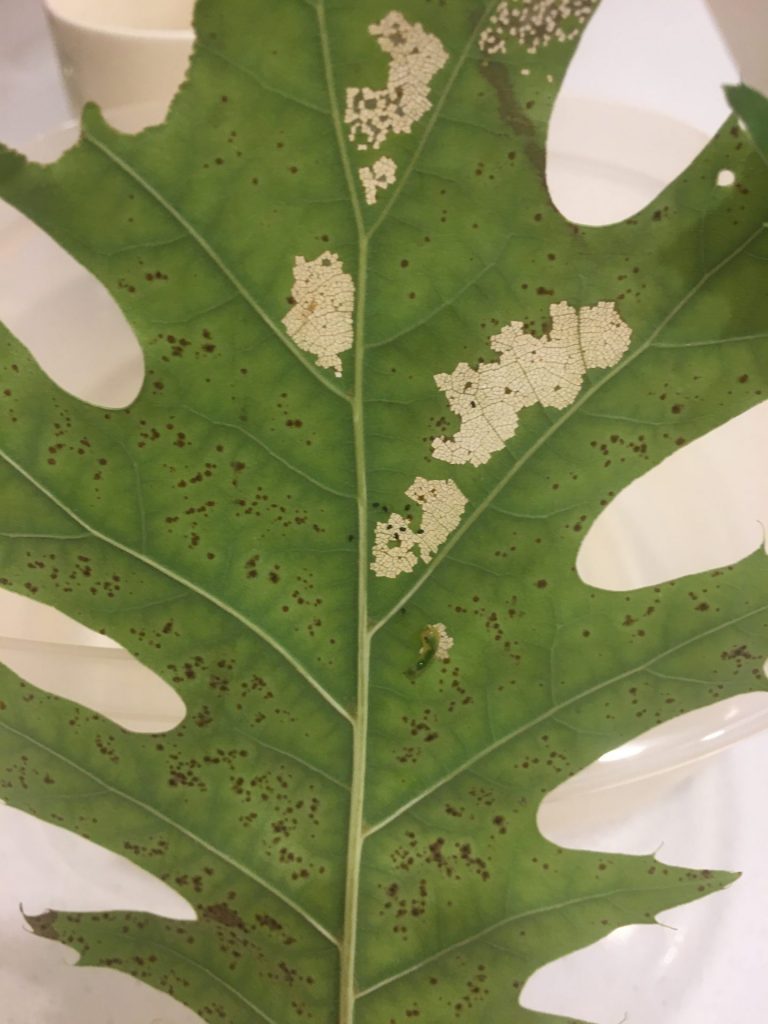
I have treated our oak with btk three weeks ago and all seemed well until leaves started disintegrating (see image). Help please.
Btk (Bacillus thuringiensis var. kurstaki) is a rod-shaped bacterium that is used to control caterpillar pests such as gypsy moths. Gypsy moth caterpillars particularly like oak, birch, aspen, maple and beech. It is safe for humans and other animals. It is often sprayed from planes and can be used on organic crops. It must be ingested by the caterpillars to kill them. Here is a good article on Btk’s effectiveness and safety.
https://extension.entm.purdue.edu/GM/PDF/GMquestions.pdf
I believe the damage you indicate in your photo has been caused by the oak leaf skeletonizer, Bucculatrix ainsliella Murtfeldt. The damage has been caused by the caterpillars of a moth. The adult moths have a wingspan of 7 to 8 mm; the forewings are largely blackish with some paler areas in them. The larvae are yellowish green and when mature are 5-6 mm in length. Small white patches of silk are often seen on the leaves where these insects are present. The larvae spin these silken pads as a protective cover under which to molt. When the larvae are disturbed, they spin down from the foliage on a silken thread and seem to hang in mid-air. These suspended larvae are a nuisance when the tree is located over a sidewalk or lawn area. As a result of the feeding of the larvae, oak leaves are reduced to their upper surface only, often becoming almost translucent and eventually drying out. Populations vary greatly from year to year and often nothing needs to be done if only a small number of leaves are affected. Occasional outbreaks can cause defoliation of the tree and in that case spraying should be considered, however you will have to contact a tree-care company to do this spraying. There are 2 generations of this larvae and the spraying periods are late May to early June and then the 2nd generation in early August. Here is a 2-page article with a few pictures:
http://idl.entomology.cornell.edu/wp-content/uploads/Oak-Skeletonizer.pdf

